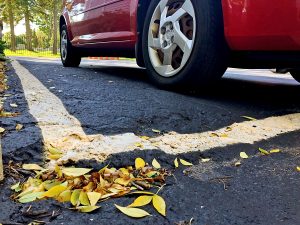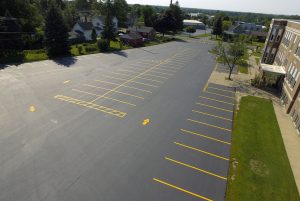
Crack sealing is an important part of maintaining your asphalt surface. But what is it and why should you use it to protect your surface?
What is Crack Sealer Made of?
Crack sealer is a hot, sticky material made of rubber and asphalt. While not used to resurface, this material is great for filling in cracks. The result is a long-lasting resilient seal that is flexible and expandable, preventing the invasion of surface water. However, crack sealing is preventative maintenance, not reconstruction. If your surface has extensive damage, crack sealing may not be enough.
Why Should You Use Crack Sealer?
Water is the most destructive element to our pavements. Cracks in asphalt allow for moisture to penetrate the surface. Constantly these cracks are expanding and contracting when the pavements move. Crack sealing can reduce pavement deterioration by restricting water penetration into the underlaying base and layers. By preventing water from getting in, crack sealing helps maintain the asphalts structural integrity and prevent future problems. Crack sealer will extend the life of your pavement and reduce the chances of large potholes, deterioration and other pavement failures.
How is Crack Sealer Applied?
Crack sealer is best applied when outside temperatures are between 45 and 65 degrees. Once the sealer is heated, the material is material is poured about 3/4 of the way into the crack. It is allowed to cool, during which it will shrink about 14%. Then the crack is completely filled. Once the filling completely cool, the surface is cleaned.
When Should Start Crack Sealing?
It is important to begin a crack sealing program at the first sign of crack developing which can be anywhere from 2-5 years after initial asphalt installation.


